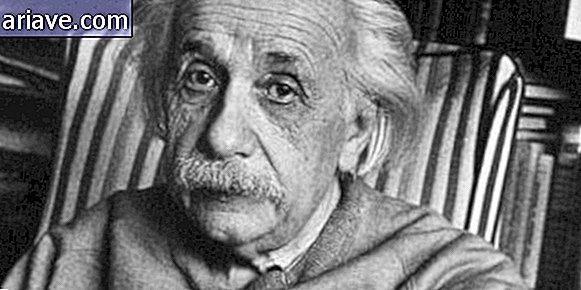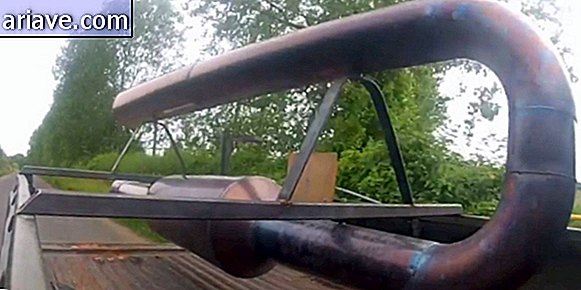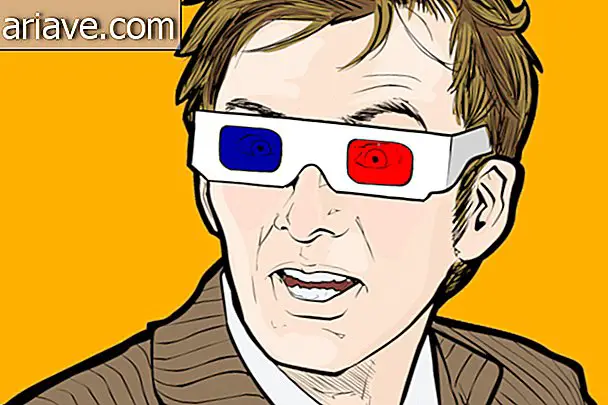The technological contributions of the 2018 World Cup countries - Groups C and D
It's World Cup soccer year, and 32 countries from the most varied corners of the world meet to play the most popular sport. In addition to seeing the ball roll, we know more about a number of nations.
Below you can check out some of the biggest technological contributions, inventions, or current works of each classified. And right now, the warning is worth it: in many cases, it is impossible to list absolutely all the scientific achievements of a nation, because the history of each country is too significant to be summarized in a few lines.
- What about groups A and B? Check it out here!
Group C
Australia
The former British colony of Oceania (but competing for a place at the World Cup in Asia) has several important inventions, but you never imagined that they emerged there. One is the aircraft black box, which records hours of cockpit audio and, because of its improved casing, survive accidents and can be retrieved to give details of what happened. David Warren began researching the invention in 1953 after the first crash of a commercial jet aircraft, the Comet.

The country is also important for the development of nothing less than wireless internet. Engineer John O'Sullivan is responsible for a 1996 patented fast and accurate signal detection system that is part of today's WiFi standards.
The electric drill was first patented there too, after an invention of Arthur James Arnot and William Blanch Brain.

And do you remember that Iran had a rudimentary form of cooling? James Harrison, in 1854, was the first to come up with a mechanical system that created ice and could be used to freeze objects and food. Still not a home product, it operated by steam compression and produced 3, 000 kg of ice a day. Even so, that was the perfect method for bringing today's refrigerators to life.

As for performance, Australia still depends on the team's better names, but will fight for a qualifying round of 16 tie.
Denmark
One of the major innovations from the Scandinavian country began as a simple joke. LEGO was founded in Billund in the interior of the country by Ole Kirk Christiansen and initially manufactured wood parts. It was by inventing the colored and mountable blocks that the small factory became the largest in the toy industry in revenue.

And not only in this industry: LEGO is widely used in education and programming, and the workings of the pieces inspired the construction of robots and machines in general.
It was also in the country that the first magnetic tape recorder was born. In 1898 Valdemar Poulsen devised the Telegraphone, a pioneering form of recording sound on metal wires using electrical signals. This technology has been replaced over time by magnetic tapes.

In football, Denmark is no longer Dinamáquina, but has a team with very interesting names and will fight to qualify in second place in the group.
France
There is a lot here! To begin with, the invention of photography can be credited altogether to a trio of French researchers. Recording images by exposing light to a substrate, such as bath salts on a metal slide, is by Nicephore Niepce. Louis Daguerre invented the daguerreotype, a more advanced photographic process. And it was Hercules Florence - born in France but living at the time here in Brazil - who coined the term “photographie” and devised a method that uses negatives similar to those in today's analog media.

In addition, brothers Auguste and Luis Lumière were the first to use a cinematograph to publicly display moving images - the good old movie precursor.

The first self-propelled land car is by Nicolas Joseph-Cugnot, who introduced the invention in 1769. The model had three wheels and was 7.8 km / h, but was unstable due to poor weight distribution. And France did not invent the motorcycle, but one of the first models of a metal bicycle, with pedals and motorcycles, is from there. The creation is by Pierre Michaux, who made the vehicle, and Louis-Guillaume Perreaux, owner of the steam engine used.

And the parachute is a pretty old idea, but the first modern (18th century) model is by Louis-Sébastien Lenormand, who even jumped from an observatory tower to successfully demonstrate the invention in the first public test of a parachute.

France are the absolute favorite to pass first in the group and also considered one of the best teams in the whole tournament.
Peru
Much is said about the ancient civilizations that inhabited the territory that today belongs to Peru, such as the Incas. But the country already in its current formation also contributed in a segment that few people imagine: aerospace science.

Engineer Pedro Paulet was one of the first scientists to build a liquid-fuel rocket engine in 1895 and the first rocket propulsion system in 1900. His work even inspired NASA, and the Nazi German government tried (without success) have access to the formula for inventions. Unfortunately, Paulet never got the funding he needed to carry out all his work.
Claudio Lévano, on the other hand, was responsible for inventing a kind of modern newborn incubator called a patented neonatal artificial bubble used in several countries.

Peru is one of the World Cup's surprises, but it has a tightly knit team and intends to surprise using this lack of favoritism.
Group D
Argentina
Quirino Cristiani was responsible for the world's first animated feature film in 1917. He was a parody of the president of the time, Hipolito Yrigoyen, and was called "El Apostle". Walt Disney tried to hire him, but he refused to leave his homeland.

The doctor Domingo Santo Liotta was responsible for the first fully artificial heart, presented in 1969. He stayed for three days in the body of a patient waiting for a transplant.
And there are more medical breakthroughs: In 1914 Luis Agote introduced a technology that allowed blood to be stored without coagulating, enabling not only the creation of blood banks, but also that transfusions need not be done directly from one person to another.

One of the first methods of fingerprint identification was born in the port city of Necochea, southwest of Buenos Aires. Juan Vucetich assisted in an investigation in 1892 with what he called "comparative typing" - no less than comparing a suspect's (later convicted) biometrics to a fingerprint left at the crime scene.

Especially because of stars like Messi and keeping several vice players in 2014, Argentina is running for the title once again.
Croatia
David Schwarz is thought to be the inventor of a very peculiar air transport vehicle: a kind of large metal balloon totally covered with metal. This is the principle of zeppelin, and then the story gets confusing: some sources indicate that Count Ferninando von Zeppelin bought Schwarz's patents in 1898, but others say they owned only the same aluminum supplier.

The first electric speedometer for car use is also of Croatian origin. Josip Belušic recorded the novelty in 1888 with the original purpose of measuring and providing speed and even distance traveled. The standardized model based on the engineer's invention was not adopted until 1910 - but lasts to this day.

Slavoljub Eduard Penkala was born in the territory of what is now Slovakia, but moved early to Zagreb. In 1906 he invented a "mechanical pencil" that was one of the bases for advancing what we now know as the mechanical pencil, and the following year he developed a fountain pen whose patent served as a parameter for the design of modern models. He was also notable in local aeronautics.

At the World Cup, Croatia have a full selection of stars, especially in midfield, and it is a favorite to make it through to the last 16.
Iceland
Iceland is the smallest country ever to qualify for a World Cup and has a population of only 300, 000 people. It is not distinguished by ancient inventions, but by an aspect of nature and current resource management.
For starters, the European country is an example of sustainable energy use. The adopted model uses geothermal energy to heat homes, and the electricity generated is almost entirely from renewable sources. And that was not always so, which proves that change is possible: in the 1970s, it was a nation dependent on fossil fuels.

Moreover, it is a case in point when it comes to the democratization of the internet and access to the connection by the population. The capital Reykjavík has 100% of connected homes and by 2016 there were already 75% of homes across the country with direct access to 1 Gbit / s plans via fiber. The country prohibits content censorship and has two national providers.

The region still has an unintentional technological contribution. It is Icelandic spar, a transparent variety of calcium carbonate (CaCO3) that produces a phenomenon known as double refraction. It is widely used in the study of optics.
Nigeria
Nigeria transforms the country's economic and social hardship into innovation. One of the latest news from the African country is the CompactOR, also called the “ boxed hospital ” - which, as the name implies, is nothing more than a mobile medical unit.

The invention is a briefcase with a built-in laptop that comes with a variety of medical devices, such as a defibrillator, an electrocardiograph, a suction device, an anesthesia machine, and even illumination for minor surgical procedures - all powered by solar energy. The idea is to take the set for small consultations in regions without medical care.
The country also has a successful representative in motorsport. Bisi Ezerioha is the founding pilot and engineer of Bisimoto, a respected company in the industry. In 2015 he built the Bisimoto Hyundai Sonata, considered for a time as the fastest car in the world. The engines of the manufacturer are well recognized and usually break records in technical aspects.

At the World Cup, the renewed team from Nigeria will fight for second place and try to be Africa's first team in a semi-final.
***
Do you know the Mega Curioso newsletter? Weekly, we produce exclusive content for lovers of the biggest curiosities and bizarres of this big world! Register your email and do not miss this way to keep in touch!
The technological contributions of the 2018 World Cup countries - Groups C and D via TecMundo











